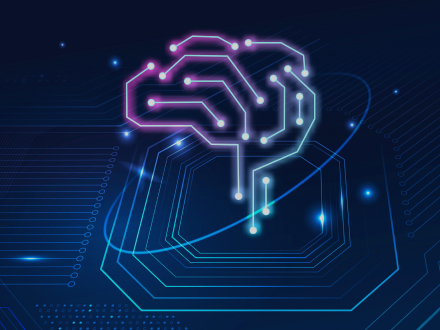Your message has been sent.
We’ll process your request and contact you back as soon as possible.
The form has been successfully submitted.
Please find further information in your mailbox.


The big data industry is experiencing substantial growth: the volume of data generated daily is staggering.
According to Statista, approximately 328.77 million terabytes, or 0.33 zettabytes, of data are created each day. This amounts to roughly 2.31 zettabytes per week and 120 zettabytes annually, illustrating the immense scale of data production.
The volume of data encompasses newly generated, captured, copied, or consumed information, indicating that 90% of the world’s data has been created in the last two years alone. The breakdown of data creation in different time spans further highlights the magnitude of this growth.
Navigating through the data-driven landscape, current big data trends highlight the importance of addressing practical concerns such as enhancing data security, ensuring privacy, and efficiently managing diverse data sources.
In this article, we will further explore these big data analytics trends and developments, delving into how they influence the future of big data and the implications for businesses and professionals in this field.
The big data market has experienced rapid growth and will continue further advancements in 2024. Notably, the global big data analytics market is forecasted to reach about 84 billion U.S. dollars in 2024 and to grow to 103 billion U.S. dollars by 2027, indicating a substantial expansion across industries.
This increase is partly driven by innovations in data visualization and AI-enabled analytics, which are becoming accessible to a broader range of business users. Additionally, the diversity and volume of data, especially from non-database sources like IoT devices, are catalyzing the need for more robust big data management solutions and a shift from traditional data warehouses.
In terms of the overall picture, the big data arena is seeing a shift with technologies like edge computing gaining prominence due to their ability to process data closer to its source. This shift is critical for handling the vast amounts of data generated by contemporary digital activities and IoT devices.
“In 2024, the data landscape is akin to an ever-expanding universe. For businesses, it’s less about hoarding this data and more about astutely navigating through it to find useful patterns. The upcoming years are poised to revolutionize our approach to big data, focusing on sophisticated analytics that cut through the noise. It’s an exciting time, with data not just as a byproduct of business activities but as a core driver of strategic direction.”

Philip Tikhanovich
Head of Big Data and AI
As we examine big data trends in 2024, it’s essential to recognize the evolving business environment. businesses are increasingly leveraging big data for strategic decision-making, but they still only utilize 57% of the data they gather. The remaining 43% of data, which remains untapped, represents a huge opportunity for businesses. This unused data could hold surprisingly useful insights that could drive further innovation, underscoring the need for improved data management and analysis techniques, more accurate, real-time insights and data-driven strategies. Overall, developments like AI-based analysis, cloud computing integration, and the growing significance of data privacy are shaping how companies approach big data.
Let’s delve deeper into each of emerging big data trends to understand their impact in 2024.
AI and ML are revolutionizing big data processing. AI solutions can automate up to 70% of all data processing work and 64% of data collection work, playing a key role in pattern identification and decision-making algorithm creation.
For instance, tools like TensorFlow and IBM Watson are used widely to analyze large data sets, identifying patterns that would be impossible for humans to discern quickly. These tools are also instrumental in predictive analytics, helping businesses forecast trends, customer behaviors, and market shifts. Companies like Netflix and Amazon use AI-driven insights to personalize recommendations for users, which illustrates the trend’s practical application of this trend.
ESG (Environmental, Social, and Governance) reporting is becoming a significant trend in big data, especially in Europe, where regulatory frameworks are rapidly evolving. A key aspect of this shift is focusing on the legitimacy of ESG claims and mitigating greenwashing practices.
Starting in 2024, new mandatory disclosures will come into effect under various international standards, requiring companies to report on a wide range of ESG metrics, including climate impact, circular economy, pollution, biodiversity loss, and social challenges such as worker treatment and business conduct policies. This move towards more comprehensive reporting is expected to change how companies gather and disclose ESG data.
The challenges of ESG reporting, mainly due to its fragmented and varied nature compared to standardized financial reporting, are being addressed through technology and data-driven methods. Data analysts increasingly employ AI and machine learning to examine ESG data, providing investors with more detailed information.
A key big data trend in 2024 is the consolidation of data from multiple systems into one unified storage solution. This move is largely driven by the need for efficient data management and analysis, particularly for financial and production reporting. Organizations are shifting from using multiple, disjointed tools to a centralized approach, where data is aggregated into a single repository like a data warehouse or data lake. This centralization enhances data quality and availability, enabling more effective data-driven decision-making and utilization of advanced analytics AI. Tools such as SAP S/4HANA are often employed in these efforts, reflecting a broader trend towards streamlined, integrated data handling within companies.
Quantum computing represents a shift from traditional computing, leveraging the principles of quantum mechanics. It operates on qubits, which, unlike classical bits that are either 0 or 1, can exist in multiple states simultaneously.
In the context of big data, quantum computing has the potential to drastically speed up data processing, tackle complex algorithms, and solve large-scale optimization problems that are currently beyond the scope of classical computing. In areas like drug discovery, traffic optimization, and climate modeling, quantum computing can analyze and process large datasets more efficiently.
One of the key advantages of quantum computing in Big Data is its ability to perform highly complex calculations at unprecedented speeds. This capability is particularly beneficial for machine learning and AI, where it can significantly enhance the speed and accuracy of data analysis. In 2024, we are likely to see more investments and research in quantum computing as it’s becoming more accessible and integrated with big data technologies.
Data democratization, a key trend in big data, is extending access to data analytics beyond specialized IT departments to include non-technical staff within companies. This shift is largely enabled by data-as-a-service (DaaS) platforms, which simplify complex data analysis tasks with intuitive, user-friendly interfaces. These platforms democratize data access and empower employees across various departments to engage in decision-making.
The broader accessibility to data insights within organizations is fostering a more inclusive data culture, where diverse perspectives contribute to a richer analysis and understanding of data. Thus, 90% of business leaders consider data democratization a priority, demonstrating its growing importance in corporate strategy.
In 2024, data governance and security in big data are increasingly prioritizing stronger controls and modern approaches. According to Immuta’s State of Data Security Report, about 35% of data professionals prioritize data security-related initiatives, such as implementing more robust data governance and security controls. This trend is in response to the rapid evolution of AI and its impact on data security, with 56% of respondents citing the exposure of sensitive data via AI prompts as a significant concern.
Following the overarching big data trends regarding governance and security, 2024 will see a few key technological advancements gaining prominence:
In 2024, this trend revolves around how data is collected, processed, and utilized, ensuring it aligns with ethical standards.
Key aspects of this trend include:
The trend of industry-specific solutions in big data is driven by the recognition that different industries have unique data requirements. this trend reflects a move away from one-size-fits-all solutions towards more customized approaches that consider the specific nuances of each industry.
For example, in healthcare, big data is used to enhance patient care through personalized medicine, predictive analytics for disease outbreaks, and optimizing hospital operations. According to Visiongain, the value of global big data analytics pertaining to healthcare is expected to reach $101.07 billion by 2031.
Financial services, on the other hand, utilize big data for fraud detection, risk management, and personalized customer services. In retail, big data aids in understanding consumer behavior, improving supply chain efficiency, and optimizing product placements.
The reasons for this trend are multifaceted. Firstly, as the volume and variety of data increase, so does the complexity of extracting insights. Industry-specific solutions address this by tailoring data collection and analysis to the particular context of each sector. Secondly, specific regulatory considerations come into play. Finally, the rapid evolution of technology has made it possible to develop more sophisticated, industry-tailored analytics tools.
This trend is about harnessing the vast amounts of data generated by IoT devices and using big data analytics to extract valuable information. One of the notable examples of IoT and big data integration is in the agricultural sector. IoT devices are used in farming to monitor various factors such as soil conditions, weather patterns, and crop health. This data is then analyzed using big data tools to optimize farming practices, enhance crop yields, and reduce waste. For instance, companies like John Deere are integrating IoT into their farming equipment to enable precision farming. They use satellite-connected systems to collect data for improved efficiency in fertilizer and pesticide usage.
Another example is in the healthcare sector, where IoT devices are used to monitor patients’ health and gather medical data. big data analytics can then be applied to this data for better patient care and early detection of diseases.
The integration of IoT and big data is providing unprecedented opportunities for businesses across various industries to optimize operations, enhance customer experiences, and formulate strategies based on real-time data insights.
As the volume and complexity of data grow, the ability to visualize and interpret this data becomes increasingly important for organizations.
Key aspects of this trend include:
Beyond 2024, the future of big data is poised to profoundly reshape industries and daily life. Envision a world where data-driven insights are deeply embedded in every decision, both mundane and complex.
This future scenario envisages a paradigm where sophisticated algorithms, capable of handling vast and intricate datasets, drive decision-making across various sectors, from personalized healthcare protocols to comprehensive urban development strategies. Concurrently, the ethical dimension of data management will come to the fore, compelling the creation of advanced frameworks that ensure privacy, security, and ethical use of data. This evolution promises a smarter, interconnected existence, balancing tech advancements with responsible data stewardship.
As we wrap up our exploration of the big data trends for 2024, a few key points emerge as essential for businesses to consider:
The future of Big Data is promising and holds the potential for transformative change across industries but it also requires a mindful approach to how data is managed, analyzed, and utilized. Businesses that can adapt to these evolving trends and incorporate them into their strategies will be well-positioned to thrive in a data-driven future.
AI is transforming big data by increasing its capabilities for complex data analysis and predictive modeling. In 2024, AI algorithms will automate data processing tasks, enabling faster and more accurate insights. AI’s integration with big data analytics is pivotal in fields like healthcare for predictive diagnostics and in retail for customer behavior analysis. The progression of AI tools, such as deep learning and neural networks, are making it possible to extract more nuanced insights from vast datasets.
The primary challenges in big data security and privacy include safeguarding data against breaches, ensuring compliance with evolving privacy laws, and managing the vast scale of data securely. As data sources diversify and the volume of data grows, maintaining its integrity and confidentiality becomes more complex. Additionally, the challenge of balancing data accessibility with privacy protection is a critical concern for organizations, particularly in the context of GDPR and other privacy regulations.
Edge computing is significantly impacting data processing by enabling data analysis closer to the source of data generation. This reduces latency and bandwidth usage, which is important for real-time data processing applications like IoT devices in smart cities or real-time monitoring systems in manufacturing. By processing data locally, edge computing allows for quicker decision-making and reduces the load on central data centers.
Data visualization is crucial in big data analytics as it transforms complex datasets into understandable visual formats. It helps reveal trends, patterns, and outliers that might not be apparent in raw data. Effective visualization aids in making data more accessible to decision-makers, facilitating more informed decisions. Tools like Tableau and Power BI are prominent in this space, providing advanced visualization capabilities.
Beyond 2024, advancements in quantum computing are expected to revolutionize big data processing by handling complex calculations at unprecedented speeds. The growth of IoT will continue to contribute vast amounts of data, requiring more advanced big data solutions. Additionally, there will be a greater focus on ethical AI and responsible data use, with developments in privacy-enhancing technologies. The trend towards personalized data-driven experiences will likely evolve further, impacting sectors like e-commerce, healthcare, and entertainment.
Rate this article:
4.8/5 (45 reviews)












Your message has been sent.
We’ll process your request and contact you back as soon as possible.

By signing up you agree to our Privacy Policy, including the use of cookies and transfer of your personal information.